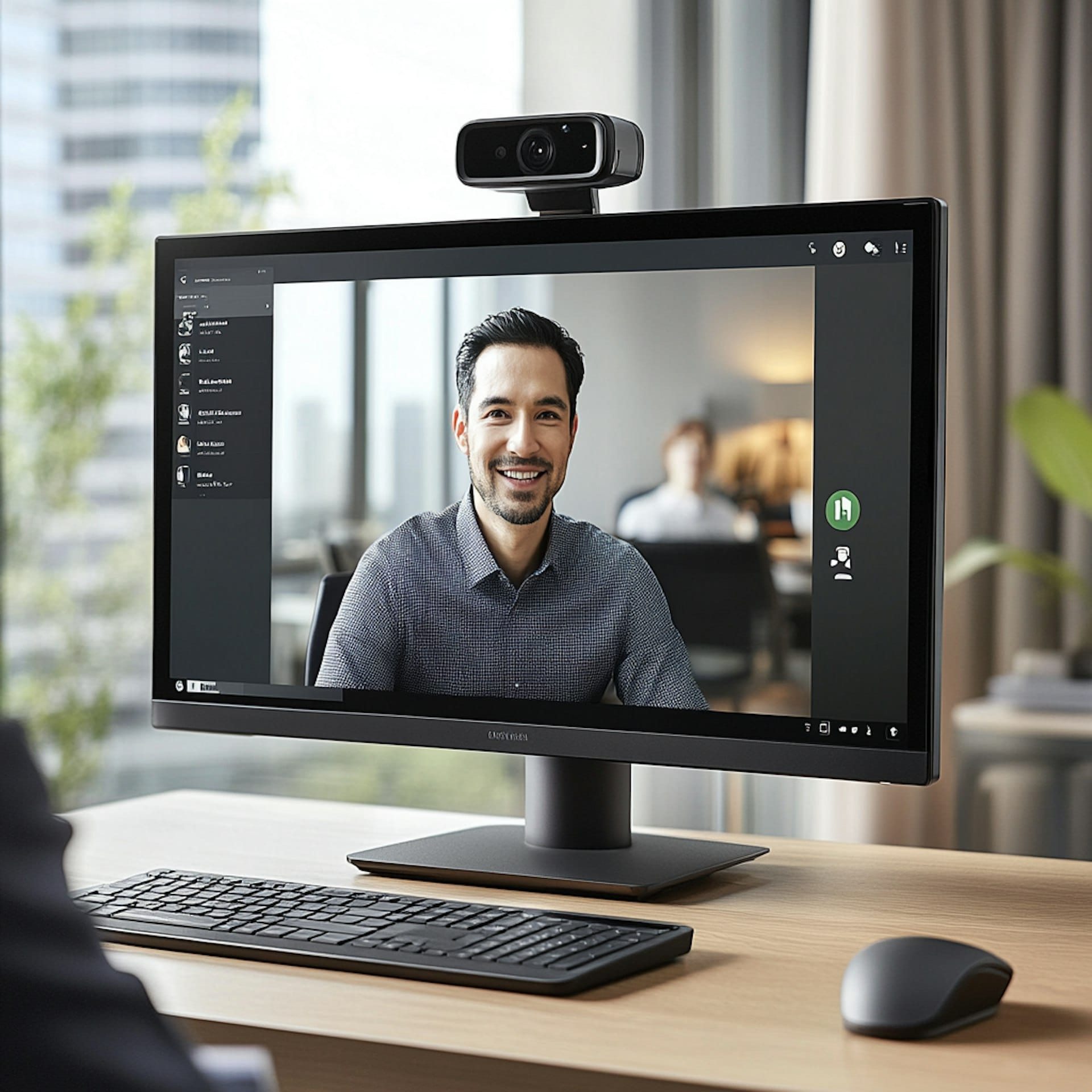The Secret Sauce of Digital Marketing: 7 Unexpected Tactics That Actually Work

Digital marketing is a vast ocean of strategies and tactics. While SEO, social media, and email marketing are the big fish in the pond, there are some hidden gems that can make a splash and drive impressive results. At Richy Media, we love uncovering these lesser-known tactics that can supercharge your digital marketing efforts. Ready to dive into some unexpected strategies that actually work? Let’s get started!

1. Embrace the Power of Interactive Content
Interactive content isn’t just a flashy trend—it’s a powerful way to engage your audience and gather valuable insights.
- Quizzes and Polls: Create fun and informative quizzes or polls that encourage user participation. They not only engage but also provide insights into your audience’s preferences and interests.
- Interactive Infographics: Design infographics that allow users to interact with data. Clickable elements or dynamic visuals can make complex information more digestible and engaging.
- Interactive Videos: Incorporate clickable elements or branching scenarios in your videos to create a more immersive experience. Let viewers choose their own path or explore different aspects of your content.
2. Leverage User-Generated Content (UGC)
User-generated content is a goldmine for building trust and increasing engagement. It’s authentic and comes straight from your audience.
- Encourage Reviews and Testimonials: Ask satisfied customers to leave reviews and testimonials. Showcase these on your website and social media to build credibility.
- Run UGC Contests: Host contests that encourage users to submit their own content, such as photos or videos. Offer prizes or recognition to motivate participation and generate buzz.
- Feature UGC on Your Channels: Share user-generated content on your social media profiles, website, or marketing materials. It not only provides fresh content but also makes your audience feel valued.
3. Tap into the World of Micro-Influencers
Micro-influencers might not have millions of followers, but they often have highly engaged and niche audiences.
- Identify Micro-Influencers: Look for influencers within your industry or niche who have a smaller but dedicated following. Their influence can be more impactful than larger influencers.
- Build Relationships: Engage with micro-influencers and build genuine relationships. Collaborate on content, product reviews, or sponsored posts to reach their engaged audience.
- Measure Impact: Track the performance of your micro-influencer campaigns to assess their impact on brand awareness and engagement. Micro-influencers often deliver high ROI due to their targeted reach.

4. Harness the Power of Nostalgia Marketing
Nostalgia marketing taps into the emotional connections people have with the past. It can evoke positive feelings and strengthen your brand’s appeal.
- Create Nostalgic Content: Develop content that references past trends, pop culture, or childhood memories. This can resonate with your audience and create a sense of familiarity.
- Design Retro Campaigns: Use retro-inspired visuals, slogans, or themes in your marketing campaigns. Nostalgic design elements can attract attention and spark interest.
- Leverage Classic Products: Revive or reintroduce classic products with a modern twist. This can appeal to both long-time fans and new customers who appreciate the throwback.
5. Experiment with Gamification
Gamification adds game-like elements to your marketing strategies to boost engagement and motivation.
- Create Challenges and Rewards: Design challenges or competitions that encourage users to participate and earn rewards. This can increase engagement and foster a sense of accomplishment.
- Implement Leaderboards: Use leaderboards to showcase top performers and create a sense of competition. This can drive participation and encourage users to engage more frequently.
- Integrate Game Mechanics: Use elements such as points, badges, or levels into your marketing campaigns. This can make your content or promotions more interactive and enjoyable.

6. Utilize Augmented Reality (AR)
Augmented Reality (AR) is no longer just for sci-fi movies—it’s a powerful tool for enhancing customer experiences.
- Create AR Experiences: Develop AR filters or apps that allow users to interact with your brand in innovative ways. For example, try-on features for fashion or virtual tryouts for home decor.
- Enhance Product Demos: Use AR to provide interactive product demonstrations. Let customers visualize how products will look or function in their own environment.
- Engage with Interactive Ads: Incorporate AR into your advertising campaigns to create interactive and immersive experiences. This can capture attention and drive engagement.
7. Dive into Social Commerce
Social commerce merges e-commerce with social media, allowing users to shop directly from social platforms.
- Set Up Shoppable Posts: Use features like Instagram Shopping or Facebook Shops to create shoppable posts. Tag products in your social media posts to make it easy for users to purchase.
- Leverage Live Shopping: Host live shopping events where you showcase products and answer questions in real-time. This can create a sense of urgency and drive immediate sales.
- Integrate User Reviews: Display user reviews and ratings directly on your social commerce pages. Social proof can boost trust and encourage purchases.

Having discovered these unexpected digital marketing tactics, the next step is to transform them into actionable strategies that drive real results. At Richy Media, we’re passionate about helping you integrate these gems into your marketing plan. Let’s dive into how you can effectively implement these tactics to maximize their impact and watch your brand shine!
1. Implementing Interactive Content
Interactive content can significantly boost engagement and provide valuable insights. Here’s how to make it work for you:
- Design Engaging Quizzes and Polls: Use tools like Typeform or SurveyMonkey to create engaging quizzes and polls. Ensure they are relevant to your audience’s interests and integrate them into your website, social media, and email campaigns.
- Create Interactive Infographics: Tools like Canva or Piktochart can help you design interactive infographics. Include clickable elements that reveal additional information or data when interacted with.
- Develop Interactive Videos: Platforms like Wistia or YouTube offer features to create interactive videos. Use them to add clickable links, polls, or branching scenarios that enhance viewer engagement.
Action Tip: Regularly update your interactive content based on user feedback and performance metrics. Analyze which types of content resonate most with your audience and refine your approach accordingly.
2. Maximizing User-Generated Content (UGC)
Leveraging UGC can build trust and create authentic brand experiences. Here’s how to effectively incorporate UGC:
- Encourage and Reward Participation: Use platforms like Instagram or Twitter to run UGC contests. Offer incentives such as discounts, giveaways, or features on your brand’s channels to motivate users to participate.
- Showcase UGC on Multiple Channels: Create dedicated sections on your website or social media profiles to highlight user-generated content. This not only provides fresh content but also recognizes and appreciates your audience.
- Monitor and Engage: Actively monitor UGC submissions and engage with users who create content. Respond to comments, share posts, and thank users for their contributions.
Action Tip: Track the performance of UGC campaigns by measuring engagement metrics, such as likes, shares, and comments. Use this data to refine your UGC strategy and identify top-performing content.

3. Collaborating with Micro-Influencers
Micro-influencers can offer highly targeted reach and authentic engagement. Here’s how to make the most of micro-influencer partnerships:
- Identify the Right Influencers: Use tools like BuzzSumo or Influence.co to find micro-influencers who align with your brand values and target audience. Evaluate their engagement rates and audience demographics.
- Build Genuine Relationships: Reach out to influencers with personalized messages. Build relationships by engaging with their content and offering value in return for their partnership.
- Create Collaborative Content: Work with influencers to create content that resonates with their audience. This could include sponsored posts, product reviews, or collaborative campaigns.
Action Tip: Track the ROI of your micro-influencer campaigns by monitoring engagement metrics, website traffic, and conversions generated from influencer collaborations.

4. Nostalgic Marketing Campaigns
Nostalgia marketing can create strong emotional connections with your audience. Here’s how to implement it effectively:
- Develop Nostalgic Content Themes: Identify nostalgic themes or references that resonate with your target audience. Create content that incorporates these elements, such as blog posts, social media updates, or videos.
- Design Retro-Inspired Visuals: Use retro design elements in your marketing materials. Consider incorporating vintage logos, classic fonts, or old-school color schemes to evoke a sense of nostalgia.
- Launch Nostalgia-Fueled Promotions: Offer special promotions or limited-edition products that tie into nostalgic themes. This can attract attention and generate excitement among your audience.
Action Tip: Monitor engagement and sentiment around your nostalgic campaigns. Use feedback to refine your strategy and ensure that your content resonates with your audience’s nostalgic elements.
5. Gamifying Your Marketing Efforts
Gamification can enhance user engagement and create a fun experience. Here’s how to effectively incorporate gamification:
- Design Engaging Challenges: Create challenges or competitions related to your products or services. Use platforms like Gleam or Woobox to manage and track entries.
- Integrate Game Mechanics: Add game-like elements such as points, badges, or levels to your website or app. Reward users for completing certain actions or reaching milestones.
- Utilize Leaderboards: Implement leaderboards to display top performers in your challenges or competitions. This can foster a sense of competition and motivate users to engage more.
Action Tip: Regularly update your gamification strategies based on user feedback and engagement metrics. Analyze which game mechanics drive the most interaction and adjust your approach accordingly.
6. Exploring Augmented Reality (AR) Opportunities
AR can create immersive and interactive experiences for your audience. Here’s how to get started:
- Develop AR Experiences: Use AR platforms like Spark AR or ARCore to create interactive experiences. Design AR filters, virtual try-ons, or interactive product demos that enhance user engagement.
- Enhance Product Demonstrations: Implement AR features that allow users to visualize products in their own environment. This can be particularly effective for retail and home decor industries.
- Integrate AR into Ads: Incorporate AR elements into your advertising campaigns. Create interactive ads that offer users a unique and engaging experience.
Action Tip: Track the performance of your AR initiatives by measuring user engagement, interaction rates, and overall impact on brand perception. Use this data to refine and optimize your AR strategies.

7. Leveraging Social Commerce
Social commerce combines e-commerce with social media for a seamless shopping experience. Here’s how to effectively utilize social commerce:
- Set Up Shoppable Posts: Use features like Instagram Shopping or Facebook Shops to create shoppable posts. Tag your products in posts and stories to drive traffic and sales directly from social media.
- Host Live Shopping Events: Plan live shopping events where you showcase products, demonstrate their features, and answer questions in real-time. Promote these events to generate buzz and drive participation.
- Integrate User Reviews: Display user reviews and ratings on your social commerce pages. Highlight positive feedback and customer experiences to build trust and encourage purchases.
Action Tip: Monitor social commerce performance by tracking metrics such as sales conversions, engagement rates, and traffic from social media. Use this data to optimize your social commerce strategies and enhance the shopping experience.

Measuring Success and Fine-Tuning Your Digital Marketing Tactics
With your innovative digital marketing tactics now in play, it’s crucial to assess their impact and continually refine your approach. Measuring success and making data-driven adjustments ensure that your strategies deliver the best possible results. Let’s dive into how you can track performance, evaluate effectiveness, and optimize your digital marketing efforts to maximize their potential.
1. Measuring Interactive Content Performance
Interactive content can significantly boost engagement, but it’s important to measure its effectiveness to ensure it’s meeting your goals.
- Track Engagement Metrics: Monitor metrics such as completion rates, interaction rates, and time spent on interactive content. These indicators reveal how well your content is capturing and retaining user attention.
- Analyze User Feedback: Collect feedback from users regarding their experience with interactive content. Use surveys or feedback forms to gather insights on what they enjoyed and what could be improved.
- Evaluate Conversion Rates: Assess how interactive content influences conversions. Track actions taken after engaging with interactive elements, such as sign-ups, purchases, or shares.

Optimization Tip: Use A/B testing to compare different versions of interactive content. Test various formats, designs, or features to identify what resonates best with your audience.
2. Analyzing User-Generated Content (UGC) Impact
UGC can build trust and authenticity, but evaluating its impact is key to leveraging it effectively.
- Measure Engagement and Reach: Track metrics such as likes, shares, comments, and overall reach of UGC. These metrics help gauge how well user-generated content is performing on your channels.
- Assess Brand Sentiment: Analyze sentiment around UGC to understand how users perceive your brand. Use sentiment analysis tools to evaluate positive, negative, and neutral comments.
- Monitor Conversion Rates: Determine how UGC influences conversions by tracking the percentage of users who interact with UGC and subsequently make a purchase or take a desired action.
Optimization Tip: Encourage high-quality UGC by engaging with users and providing clear guidelines on the type of content you’re looking for. Highlight the best submissions to motivate others to participate.

3. Evaluating Micro-Influencer Campaigns
Micro-influencers can deliver targeted engagement, but tracking their impact is essential for maximizing ROI.
- Analyze Engagement Metrics: Monitor engagement rates, including likes, comments, and shares, on content created by micro-influencers. Compare these metrics to industry benchmarks to gauge effectiveness.
- Track Referral Traffic: Use tracking links or unique discount codes to measure traffic and conversions generated from micro-influencer campaigns. This helps assess the direct impact on sales and website visits.
- Assess Brand Lift: Conduct surveys or use brand lift studies to measure changes in brand awareness and perception resulting from micro-influencer collaborations.
Optimization Tip: Build long-term relationships with successful micro-influencers. Continuously collaborate with those who deliver strong results and explore new influencers who align with your brand values.
4. Measuring Nostalgia Marketing Effectiveness
Nostalgia marketing can evoke strong emotions, but evaluating its effectiveness helps refine your approach.
- Track Engagement and Interaction: Measure engagement metrics such as likes, shares, and comments on nostalgic content. Monitor how these metrics compare to your standard content.
- Assess Emotional Response: Use sentiment analysis to gauge the emotional impact of nostalgic campaigns. Analyze positive and negative feedback to understand how your audience is responding.
- Evaluate Campaign Performance: Track key performance indicators (KPIs) such as website traffic, conversion rates, and sales generated from nostalgic campaigns.
Optimization Tip: Experiment with different nostalgic themes or references to find what resonates best with your audience. Use insights from your analysis to fine-tune future campaigns.
5. Analyzing Gamification Results
Gamification can boost engagement, but evaluating its effectiveness ensures you’re achieving your goals.
- Monitor Participation Rates: Track the number of users who engage with gamified elements, such as challenges or leaderboards. Measure how participation rates change over time.
- Evaluate User Feedback: Collect feedback from participants to understand their experience with gamified content. Use this feedback to identify areas for improvement.
- Assess Conversion Metrics: Analyze how gamification influences conversions, such as sign-ups, purchases, or downloads. Determine if users who engage with gamified elements are more likely to convert.
Optimization Tip: Continuously refresh and update gamified content to keep it engaging. Experiment with new game mechanics or rewards to maintain user interest.

6. Tracking Augmented Reality (AR) Impact
AR can create immersive experiences, but measuring its success helps optimize its use.
- Monitor Interaction Rates: Track how frequently users interact with AR features, such as virtual try-ons or interactive demos. Measure the duration and depth of these interactions.
- Assess User Feedback: Collect feedback from users on their AR experiences. Use this feedback to identify any issues or areas for improvement.
- Evaluate Impact on Sales: Analyze how AR influences purchasing decisions by tracking sales conversions and traffic generated from AR experiences.
Optimization Tip: Stay updated with the latest AR technologies and trends. Explore new AR features or updates to keep your content fresh and engaging.

7. Measuring Social Commerce Success
Social commerce blends e-commerce with social media, and evaluating its performance ensures you’re driving sales effectively.
- Track Sales Metrics: Monitor sales conversions, revenue, and average order value from social commerce channels. Use analytics tools provided by social platforms to track these metrics.
- Measure Engagement Rates: Analyze engagement metrics, such as likes, comments, and shares, on shoppable posts and live shopping events. These metrics indicate how well your social commerce content is performing.
- Assess Customer Experience: Collect feedback on the social commerce experience, including ease of use and satisfaction. Use this feedback to enhance the shopping experience.
Optimization Tip: Test different social commerce features, such as shoppable posts, live shopping events, or product tags, to identify what drives the best results. Adjust your strategy based on performance data.
Conclusion: Refining Your Digital Marketing Strategy
Measuring and optimizing your digital marketing tactics ensures that you achieve your goals and drive meaningful results. By tracking performance, analyzing metrics, and making data-driven adjustments, you can continuously refine your strategies and stay ahead of the competition.
Richy Media is dedicated to helping you navigate the ever-evolving marketing world. Ready to take your digital marketing efforts to the next level? Contact us today to get started on optimizing your strategies and achieve outstanding results!
